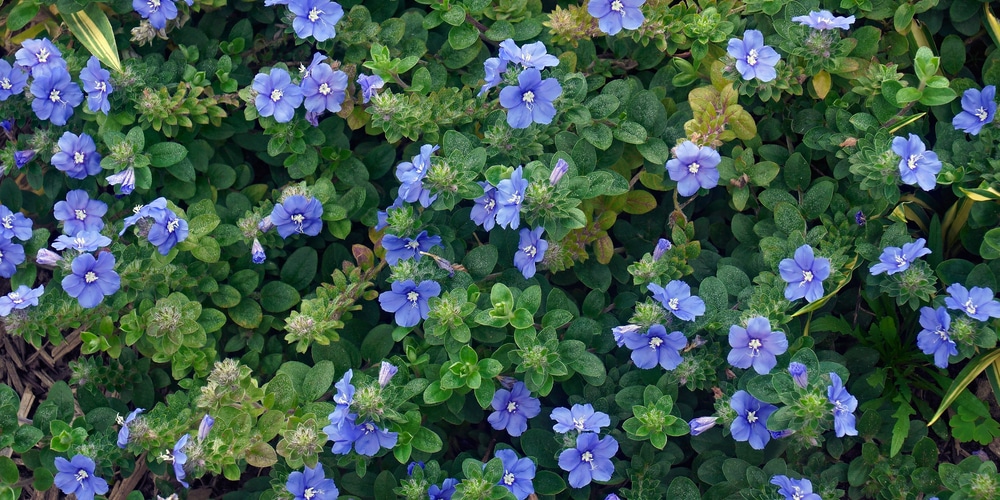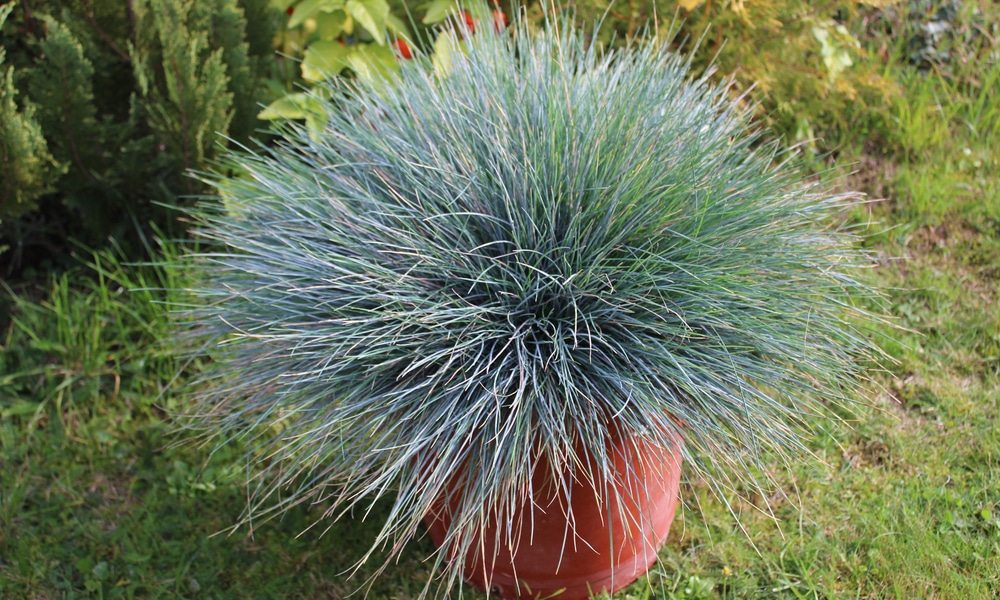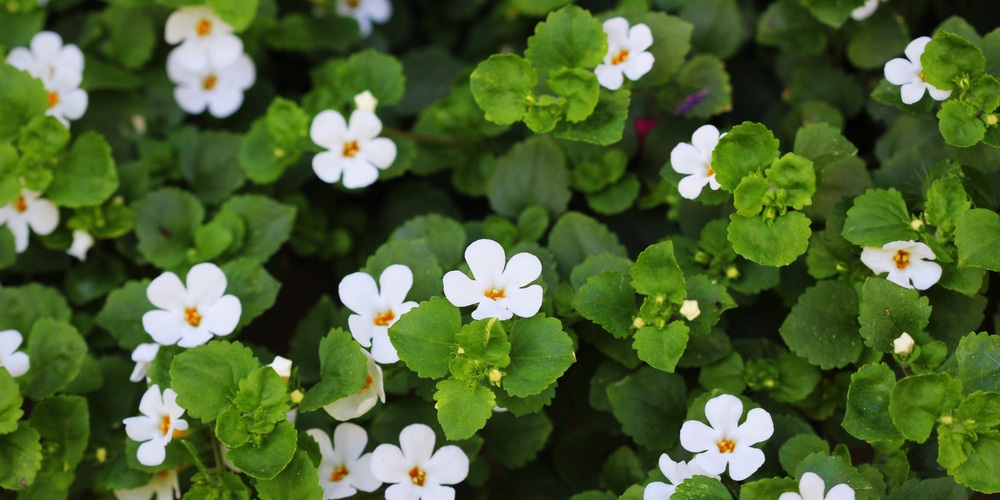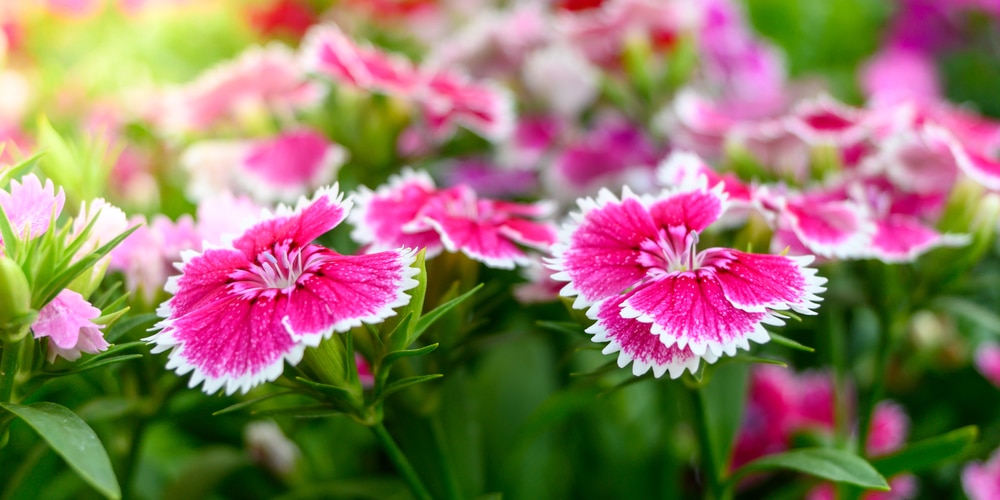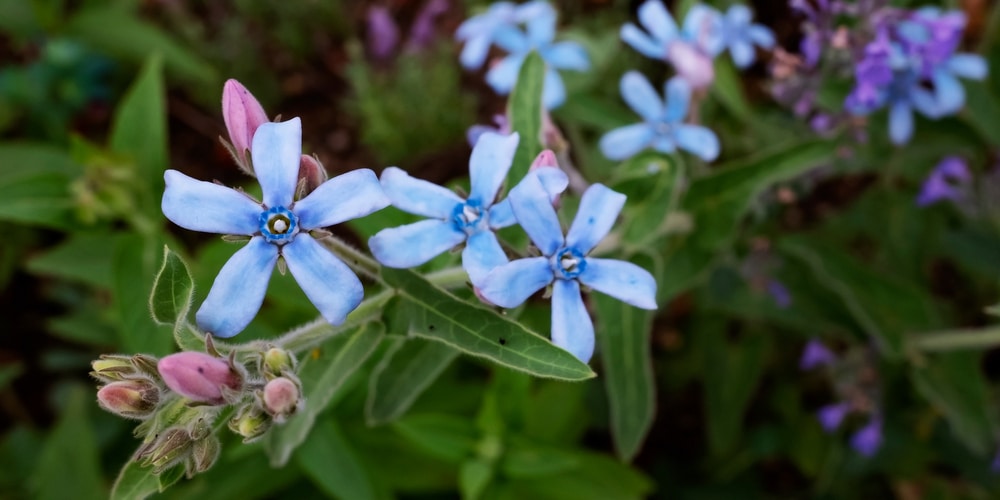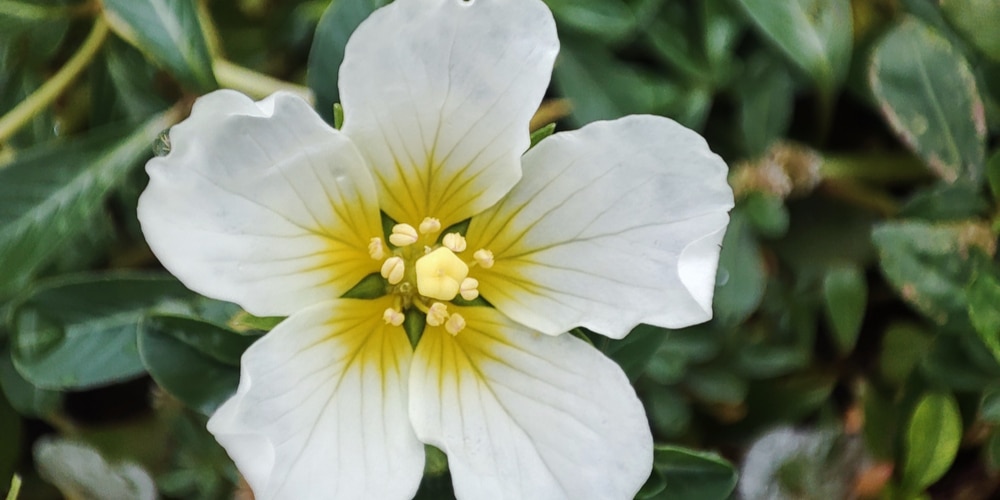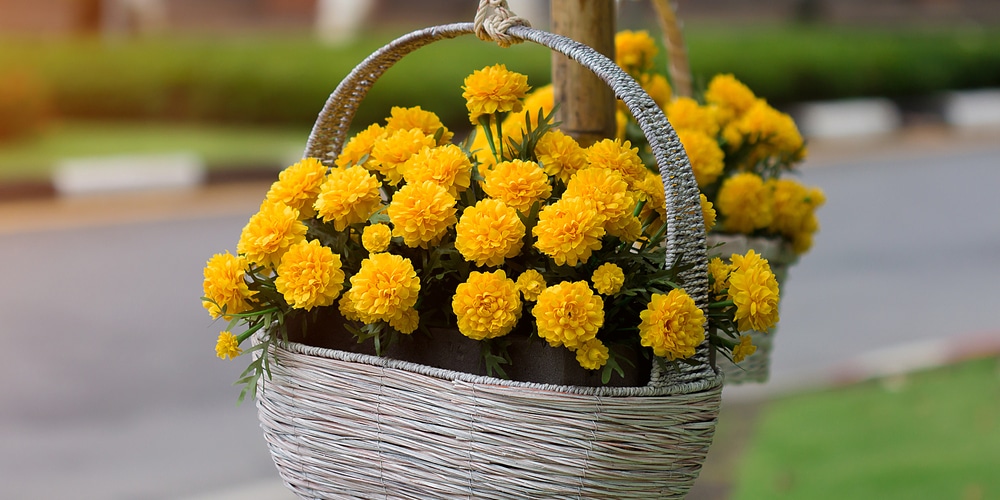Blue Dazes are noted by blue blooms held on shiny green foliage. One thing about Blue Dazes is that they bloom in the late spring going through the first fall. But, as the season progresses, Blue Daze gets exhausted and leggy. You have to cut it out to allow new growth. In as much as Blue Dazes still can self-clean, while in this process, it helps if their ugliness is covered.
Suffice it to say, you need Blue Daze companion plants such as the Blue fescues, Dianthus-Annual, and Bacopa. Dazes are also complemented by French Marigold, Tweedia, or the Nierembergia.
But before you get to that, you might want to know the outlook that will be created should you choose to use any of these plants. To begin with, the below list shows Blue Dazes companions, their characteristics, and even similarities.
Blue Fescue
The reason behind companion plants is to create a textural or even a color contrast. In this case, blue fescue is perfect for creating a contrast with the Blue Daze. Blue fescues fall under ornamental grasses, and it is noted for the glaucous, grayish-blue foliage. Its leaves create a dome figure which resembles a porcupine bush with nine grooved edges. They grow upward to about 138 mm and outwards to about 160mm. In the late spring, fescues develop pale green blooms with a purplish tinge.
Blue fescue makes a nice companion to Blue Daze because they both love well-drained soils and thrive fully in regions with cool summers. All you have to do is keep out weeds and provide a little mulch to ensure full growth. There are also a lot of options when it comes to blue fescue companion plants, so you aren’t limiting yourself if you choose it as a Blue Daze companion.
Related article: What’s the Best Time of Year to Plant Blue Fescue?
Bacopa
Bacopa are non-aromatic herbs notable for their four-petal flowers and 6mm succulent leaves. They only grow to a height of 8 inches, but in good condition, they can reach up to four feet. Bacopa not only guarantees color contrast when blended with Blue Dazes but also has the same growth characteristics. Additionally, Bacopas produce multicolored flowers with color ranges from lavender, blue, and even whitish.
Besides being used as Blue Dazes companions, Bacopas can be used as ground covers. Similar to other perennial flowers, Bacopas are affected by freezing temperatures. Plant them in well-draining soil and in spots where they get fully shone by the sun. Also, Bacopa suffers in typical dry soils, so ensure that you water them whenever it gets too dry. On the other hand, you will need bacopa cutting for propagation.
Annual dianthus
Annual dianthus green leaves and pinkish flowers make it an organic match for the Blue Dazes. Together with Blue Dazes, they are a perfect way to jumpstart a resplendent yard in the spring season. While they thrive in the same soil as Blue Dazes, annual dianthus bloom in multiple colors. That is either pink, scarlet, lavender, or at times a blend of two colors.
Additionally, the leaves are normally shiny green with traces of bluish tinges. Much in similarity with the blues Dazes, annual dianthus love the sun, and they can grow to a height of 12 inches.
Tweedia
Tweedia is a perfect companion for the Blue Dazes and ideal if you like blue blooms. On gray, felted leaves, Tweedia produces gorgeous blue flowers all summer. The five-petaled blossoms are aromatic and make excellent cut flowers, complementing any arrangement. Tweedia grows 2 to 3 feet tall and twines over trellises or other posts for support. If it gets to it, they can twine on Blue Dazes, but you should provide cages for support.
Nierembergia
Nierembergia is an excellent perennial flower for anything from pots to borders because of its lovely cup-shaped blossoms and compact growing habit. Plant it in columns in front of gardens or edges for a clean look. It’s also an excellent moderate height plant to connect aesthetically with Blue Dazes and cascade plants in pots. Nierembergia are perennials in Zone 7 going through 10, though normally planted annually.
French Marigold
French marigolds are the elegant as they come and have a characteristic “tufted eye.” Besides, they reach a height of 11 inches. Upon maturity, they produce blooms. That is in the late summer towards the killing frost. French Marigold has exquisite dark green leaves with trendy, tidy growth characteristics.
Still, they love summer heat just as Blue Dazes, and their golden-yellow blooms perfectly blend with the Blue Dazes bloom. Apart from the full sun, they like soils with good drainage. Lastly, French marigolds can reseed in the same spot yearly.
Blue Daze Companion Plants: Conclusion
Unerringly, when it comes to Blue Dazes companion plants, you have to contemplate those that are braced to survive the same condition as Blue Dazes would. With that on tabs, you need to go further and see the contrasts based on texture and color, as mentioned above.
